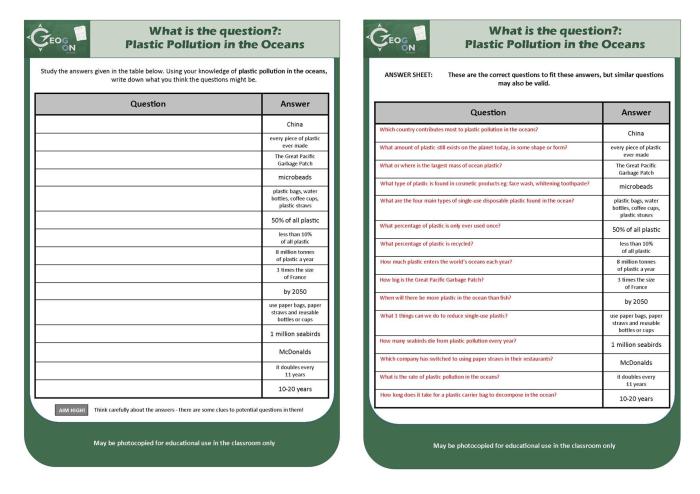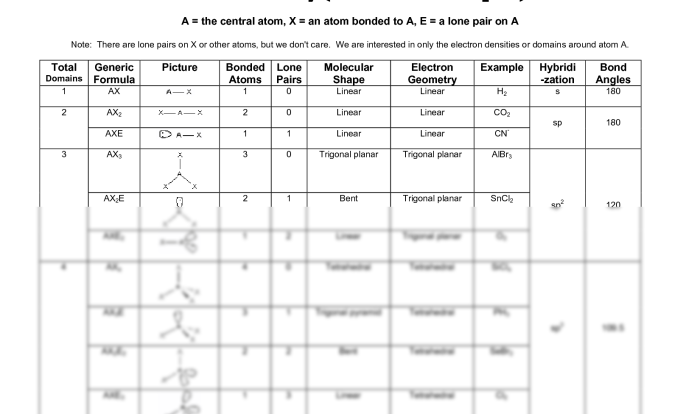Embarking on a journey of discovery with a plastic ocean worksheet answers pdf, we delve into the depths of a pressing environmental crisis. This comprehensive resource unveils the stark realities of plastic pollution, its far-reaching impacts, and the urgent need for collective action.
Through interactive activities, thought-provoking questions, and a wealth of supporting materials, this worksheet empowers learners to become informed advocates for ocean conservation.
As we navigate the intricacies of plastic pollution, we uncover the alarming statistics, explore the diverse sources and consequences, and examine innovative solutions. The worksheet fosters critical thinking, problem-solving, and data analysis skills, equipping students with the knowledge and tools to make a tangible difference.
1. Define Plastic Pollution
Plastic pollution refers to the accumulation of plastic materials in the environment, particularly in oceans and waterways, that negatively impacts wildlife, ecosystems, and human health.
Statistics indicate that over 8 million tons of plastic waste enter oceans annually, with an estimated 150 million tons of plastic already circulating in marine environments.
Plastic pollution manifests in various forms, including macroplastics (items larger than 5 mm) such as bottles, bags, and containers, and microplastics (less than 5 mm), which can result from the breakdown of larger plastic items or be manufactured for specific purposes.
2. Sources and Impacts of Plastic Pollution
Sources of Plastic Pollution, A plastic ocean worksheet answers pdf
- Land-based sources: Plastic waste from households, industries, and agriculture is often improperly disposed of and ends up in waterways and oceans.
- Marine sources: Fishing gear, shipwrecks, and offshore oil and gas operations can also contribute to plastic pollution in oceans.
Impacts on Marine Ecosystems
- Entanglement and ingestion: Marine animals can become entangled in plastic debris, leading to injury or death. They may also ingest plastic, mistaking it for food, which can block their digestive tracts and cause starvation.
- Habitat degradation: Plastic pollution can damage coral reefs, seagrass beds, and other marine habitats, reducing biodiversity and disrupting ecosystem functioning.
- Toxic effects: Plastic materials can release harmful chemicals into the environment, which can accumulate in marine organisms and have adverse effects on their health and reproduction.
Consequences for Human Health
- Seafood consumption: Humans can ingest microplastics through contaminated seafood, potentially leading to health issues such as inflammation, oxidative stress, and endocrine disruption.
- Water contamination: Plastic pollution can leach chemicals into water sources, posing risks to human health through drinking water and recreational activities.
- Aesthetic impacts: Plastic pollution can detract from the beauty and enjoyment of beaches, oceans, and other coastal environments.
3. Solutions to Plastic Pollution
Current Efforts
- International agreements: Conventions such as the Basel Convention and the London Convention aim to regulate plastic waste and prevent its disposal at sea.
- National and local regulations: Many countries have implemented bans on single-use plastics, plastic bag fees, and extended producer responsibility schemes.
- Corporate initiatives: Businesses are adopting sustainable practices, reducing plastic packaging, and investing in recycling and waste management solutions.
Innovative Solutions
- Biodegradable and compostable plastics: Developing and using alternative materials that break down naturally can reduce plastic waste accumulation.
- Advanced recycling technologies: New technologies can recycle previously unrecyclable plastics, such as chemical recycling and pyrolysis.
- Ocean cleanup projects: Initiatives are underway to remove plastic debris from oceans using various methods, such as floating barriers and underwater drones.
Individual Actions
- Reduce plastic consumption: Choosing reusable alternatives to single-use plastics, such as water bottles, shopping bags, and straws, can significantly reduce plastic waste.
- Proper waste disposal: Ensuring that plastic waste is disposed of responsibly in designated bins and recycling programs helps prevent it from entering oceans.
- Support organizations and initiatives: Joining or donating to organizations dedicated to combating plastic pollution can amplify individual efforts and support collective action.
4. Case Study
A Plastic Ocean
Documentary Analysis
The documentary film “A Plastic Ocean” provides a comprehensive overview of the global plastic pollution crisis.
Key findings include the pervasive presence of plastic in oceans, its devastating impacts on marine life and ecosystems, and the urgent need for solutions.
The film has garnered widespread attention and raised awareness about the issue, inspiring individuals and organizations to take action.
5. Worksheet Activities

Design a worksheet with interactive activities that engage students with the topic of plastic pollution.
Activities may include:
- Critical thinking questions: Prompt students to analyze the sources, impacts, and solutions related to plastic pollution.
- Data analysis: Provide students with data on plastic pollution and guide them in interpreting and drawing conclusions.
- Problem-solving scenarios: Present students with real-world scenarios and ask them to develop solutions to address plastic pollution in different contexts.
6. Additional Resources: A Plastic Ocean Worksheet Answers Pdf
- The Ocean Cleanup: https://theoceancleanup.com/: Organization dedicated to developing and deploying technologies to remove plastic from oceans.
- Plastic Oceans Foundation: https://plasticoceans.org/: Nonprofit organization raising awareness and advocating for solutions to plastic pollution.
- National Geographic: Plastic Pollution: https://www.nationalgeographic.com/environment/article/plastic-pollution/: Comprehensive resource on plastic pollution, including articles, videos, and interactive maps.
FAQ Explained
What is the primary objective of a plastic ocean worksheet answers pdf?
To provide a comprehensive understanding of plastic pollution, its sources, impacts, and potential solutions, fostering critical thinking and inspiring action.
How does the worksheet contribute to raising awareness about plastic pollution?
Through interactive activities, real-world examples, and thought-provoking questions, the worksheet engages learners and highlights the urgency of addressing plastic pollution.
What is the significance of data analysis in the worksheet?
Data analysis activities empower students to interpret scientific data, draw meaningful conclusions, and make informed decisions regarding plastic pollution.
